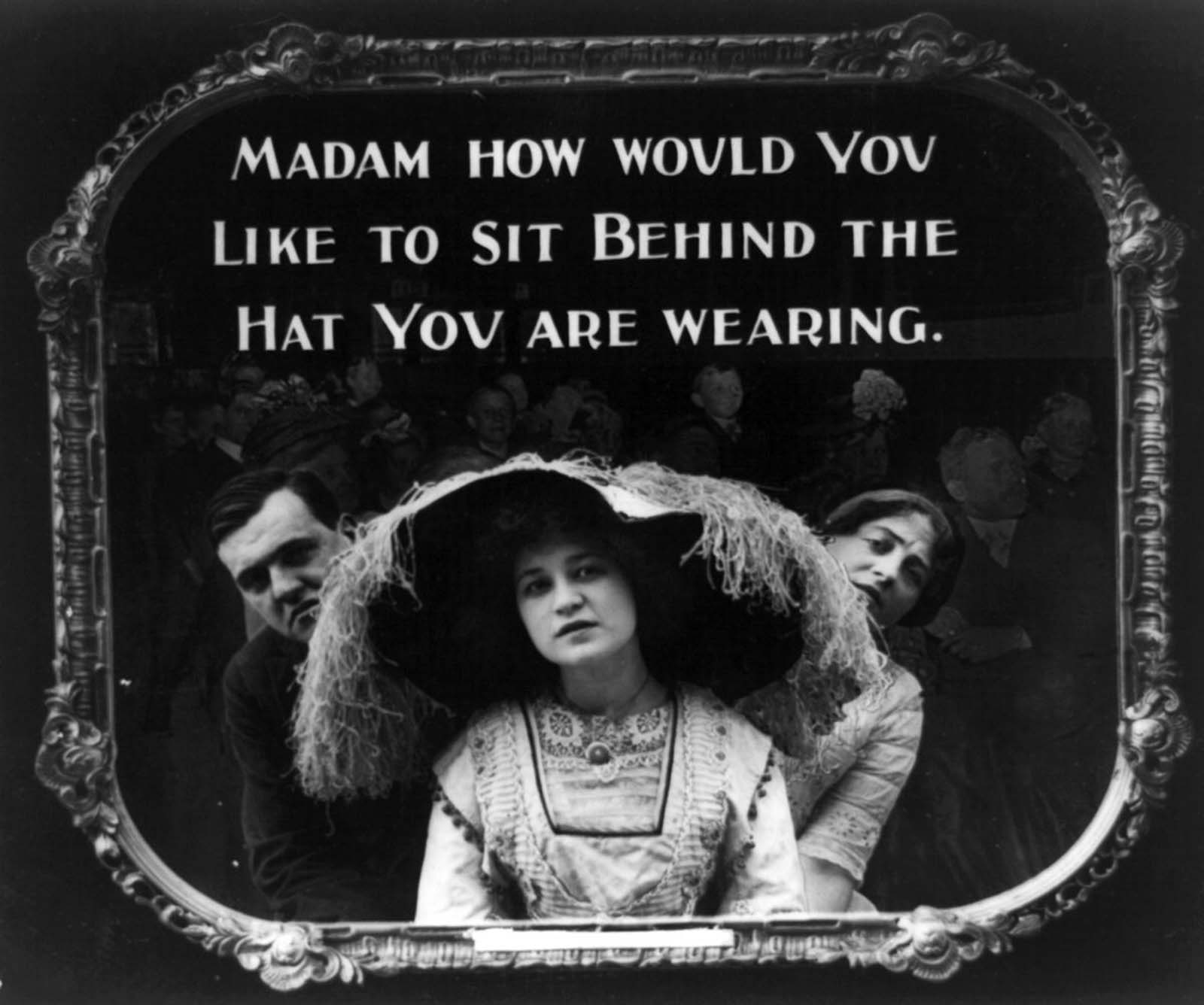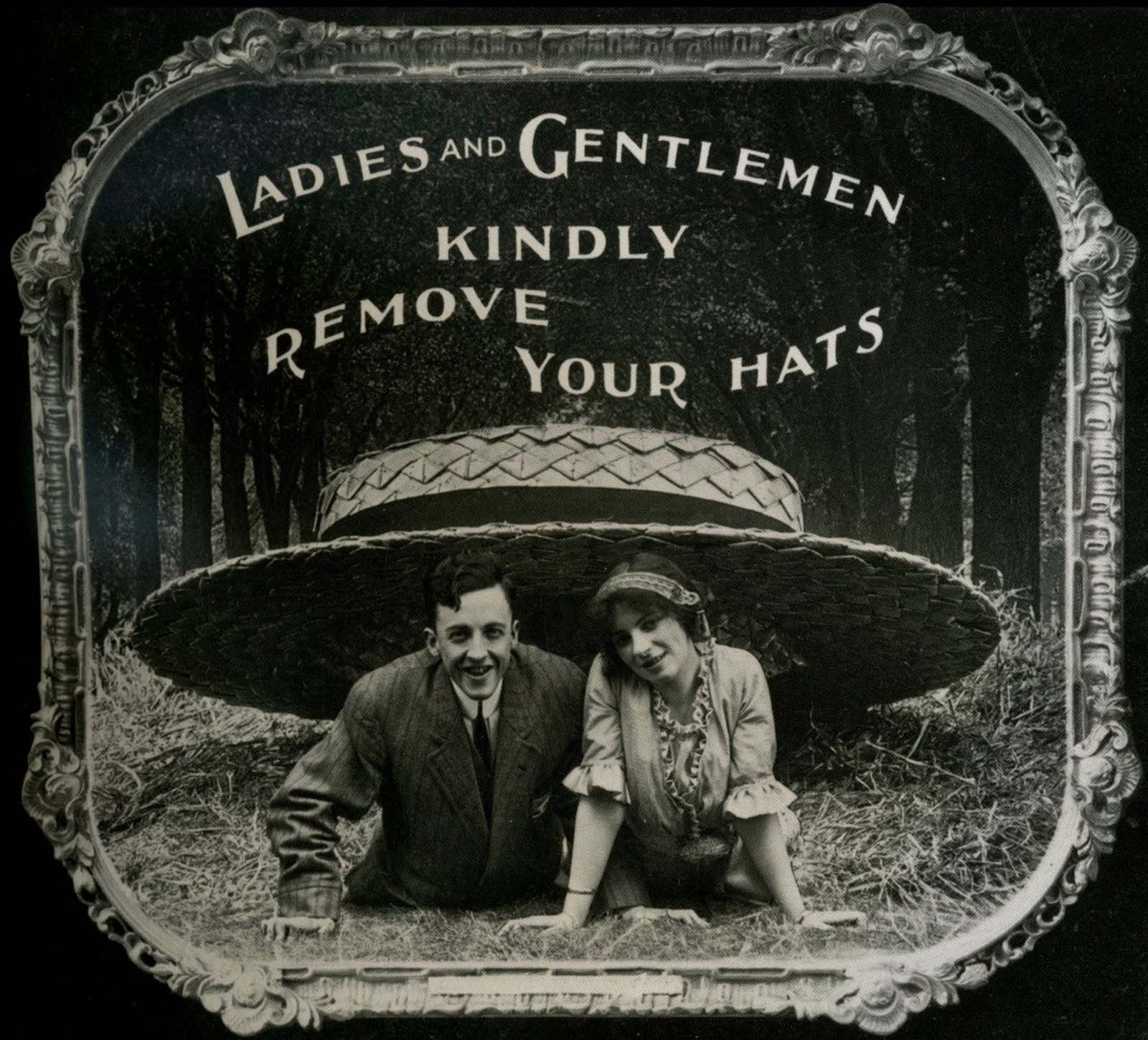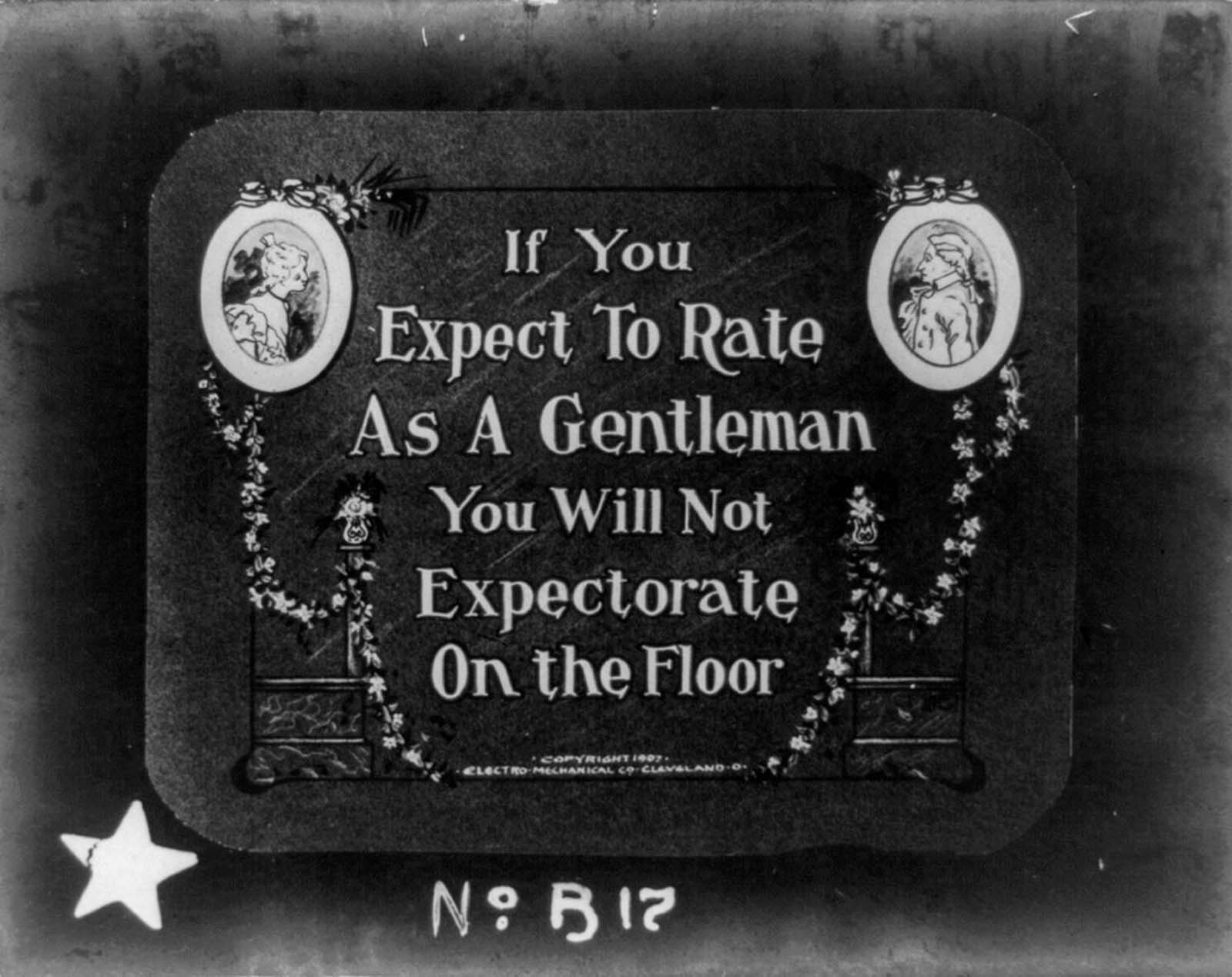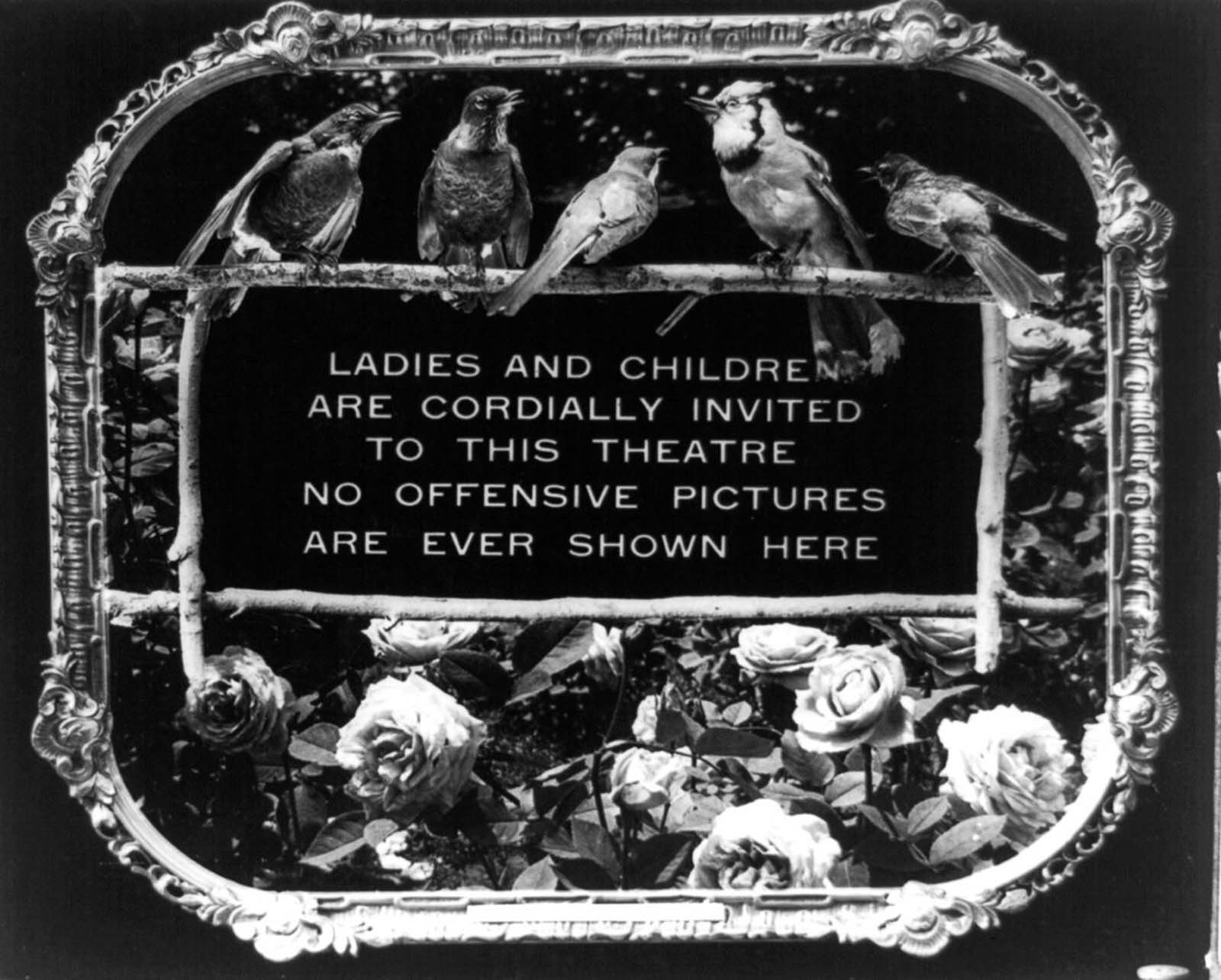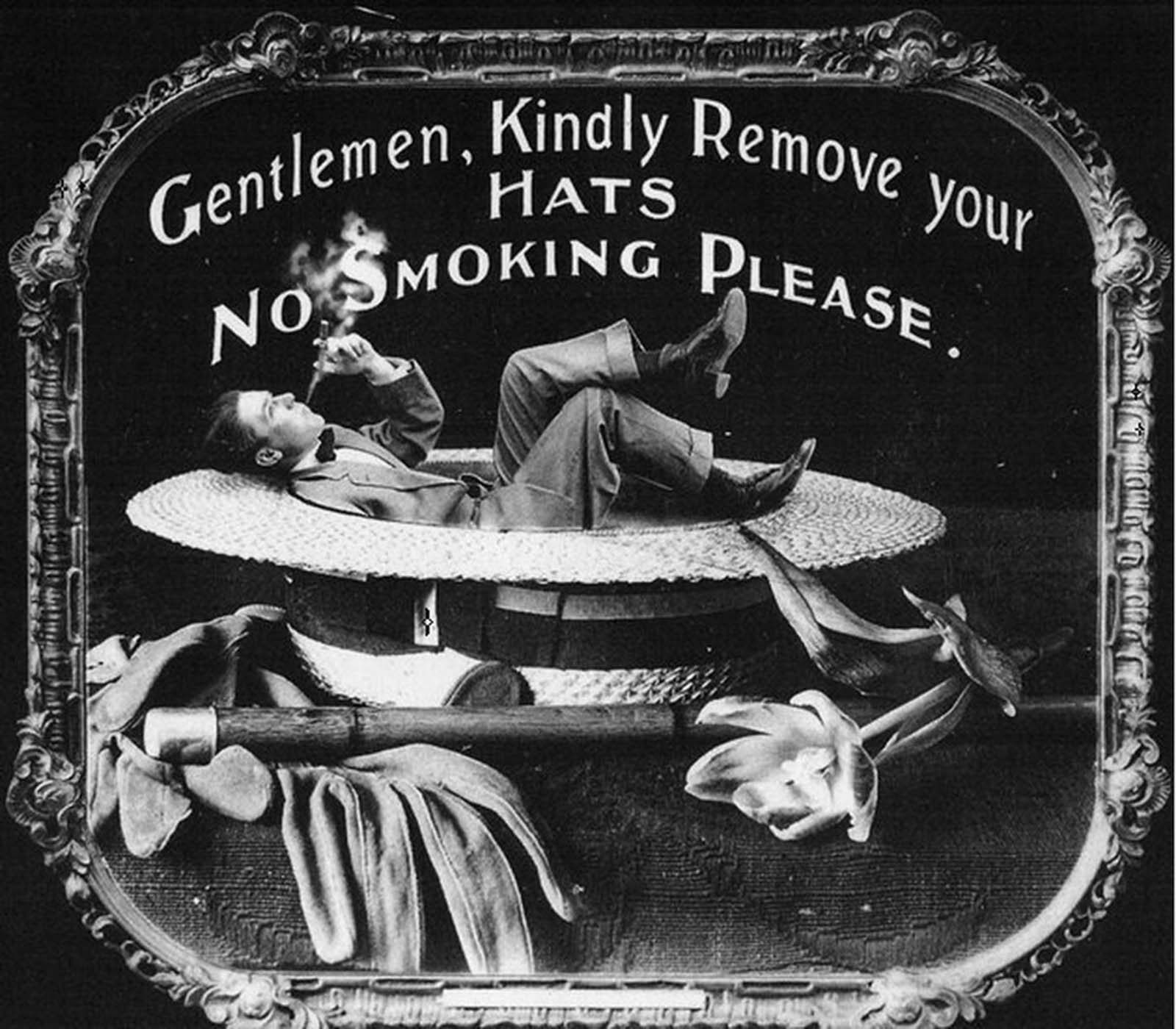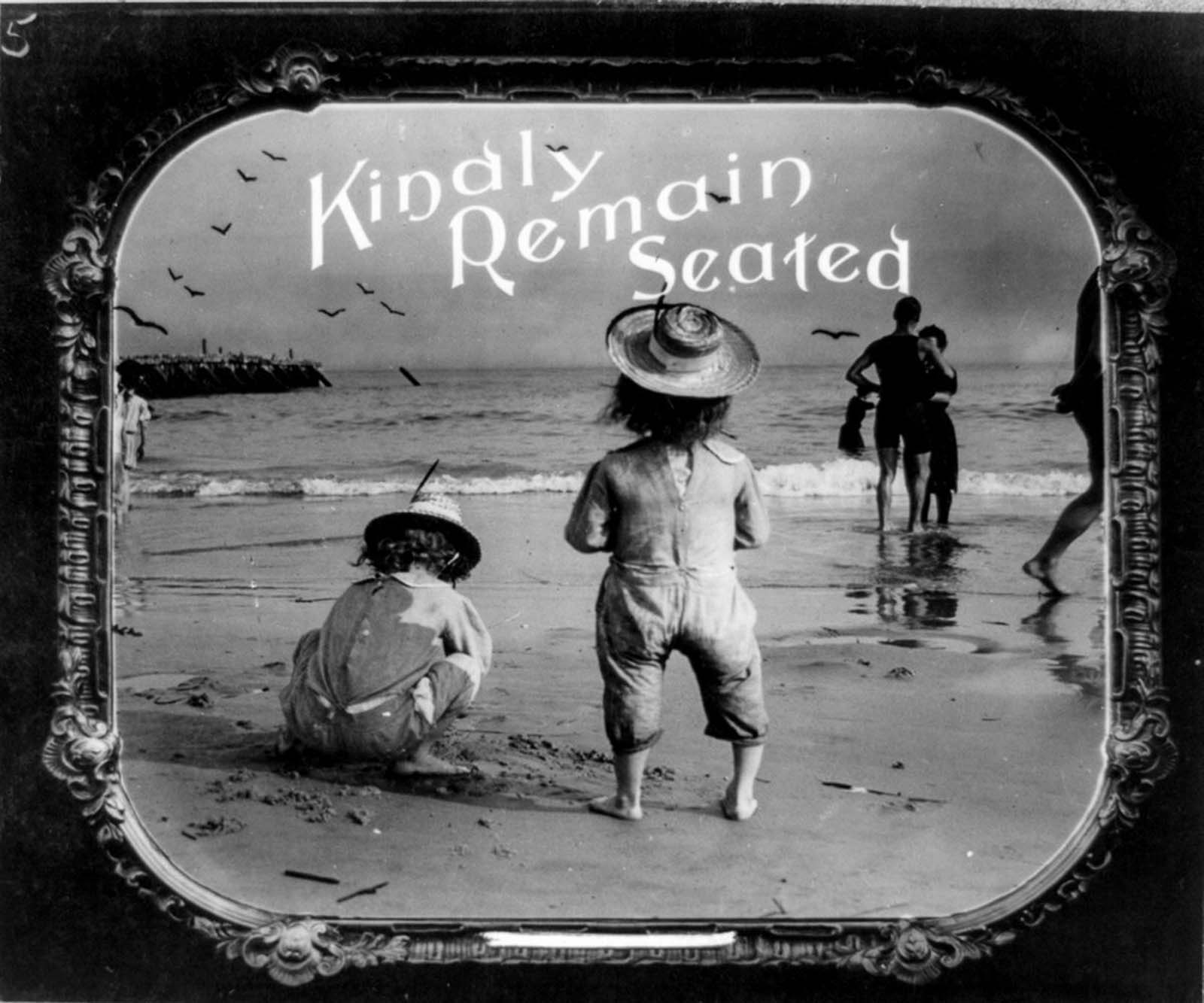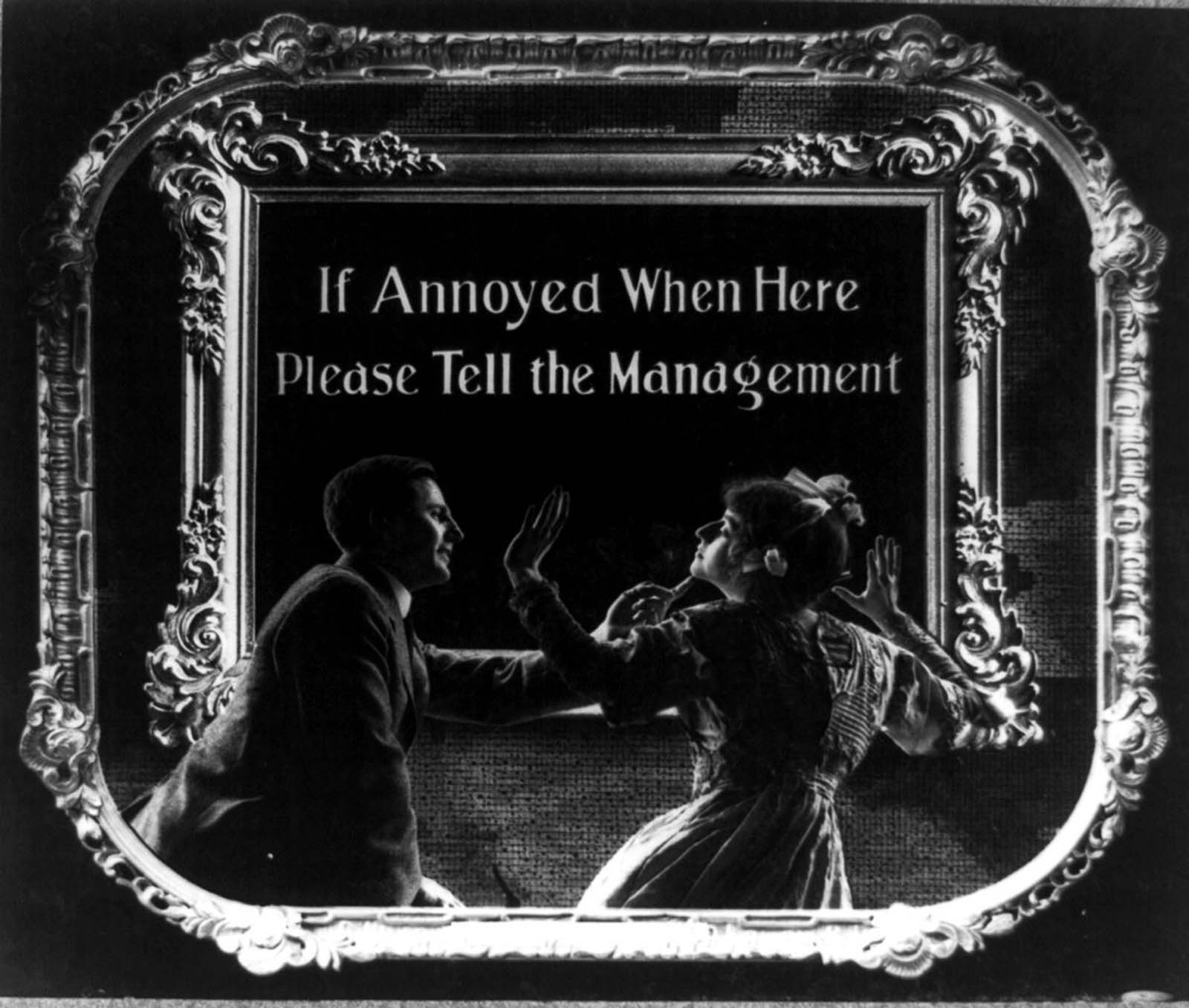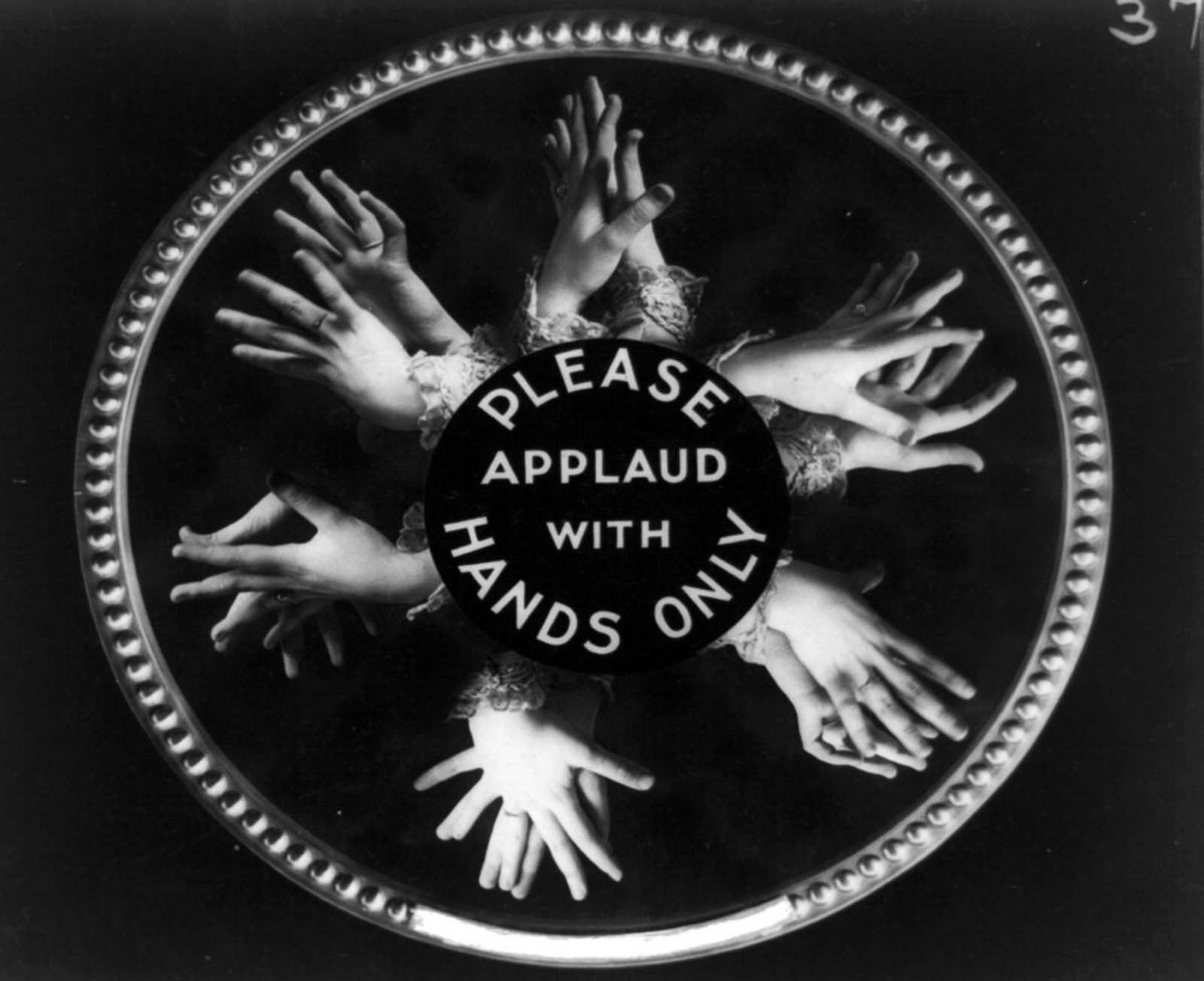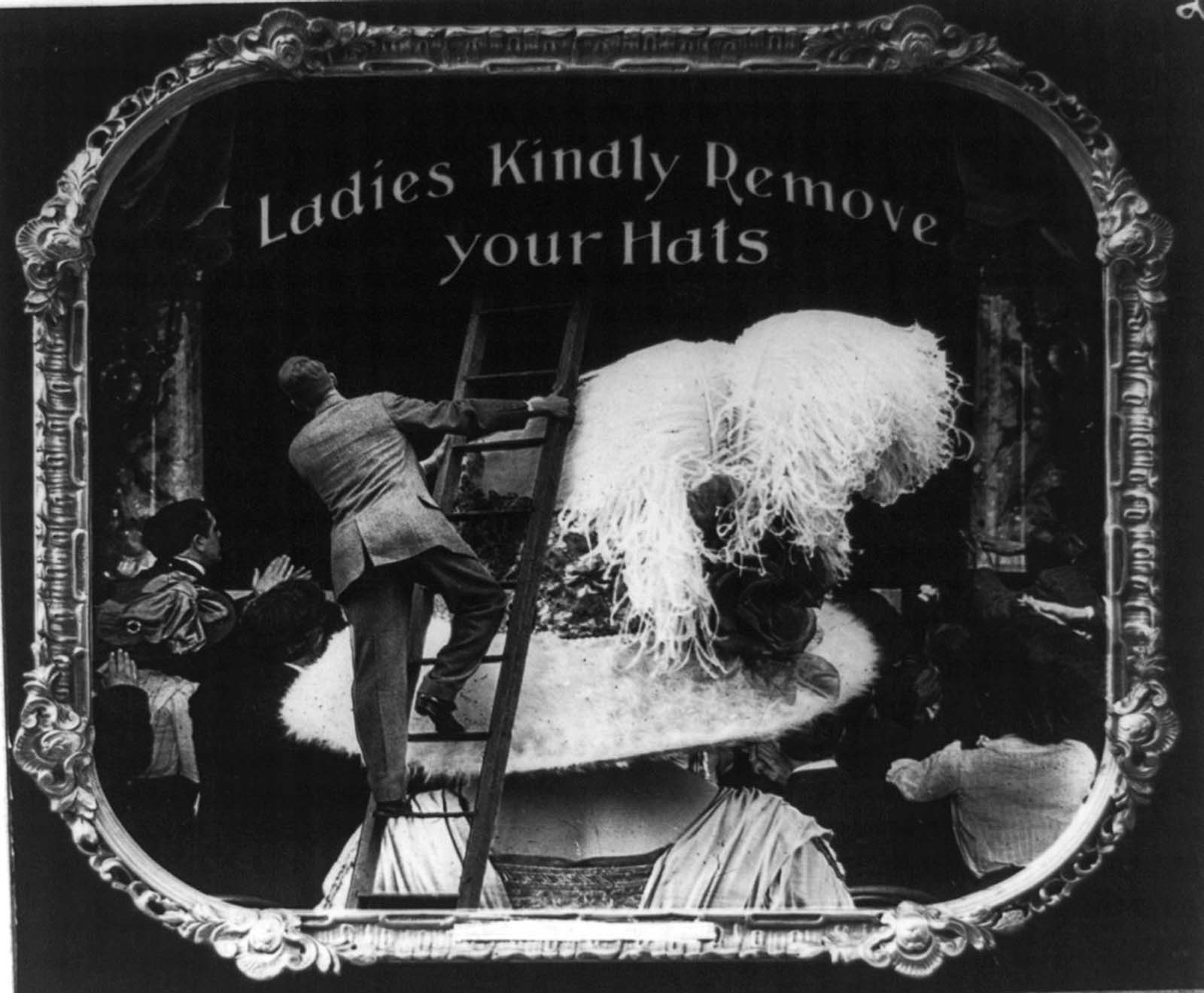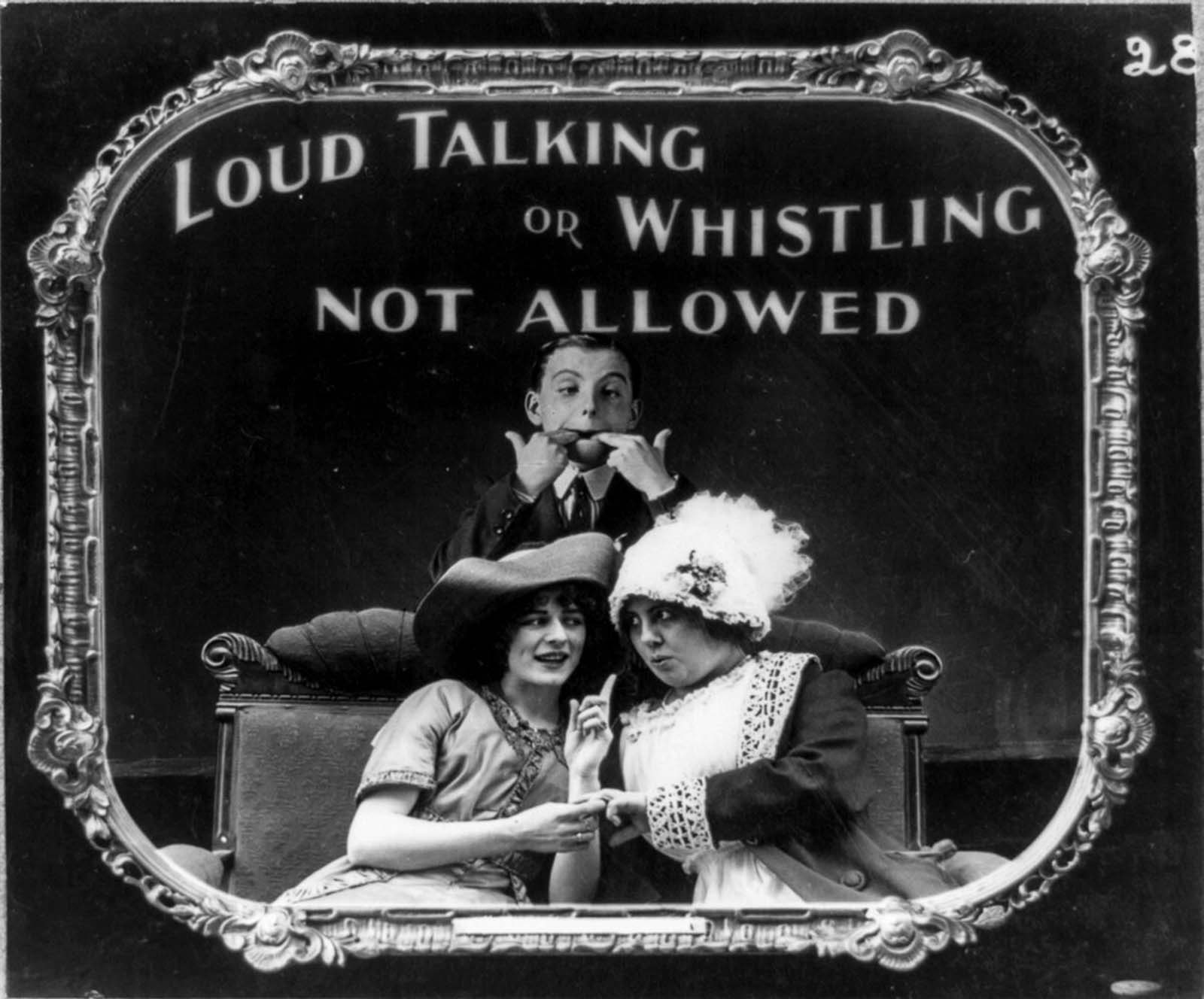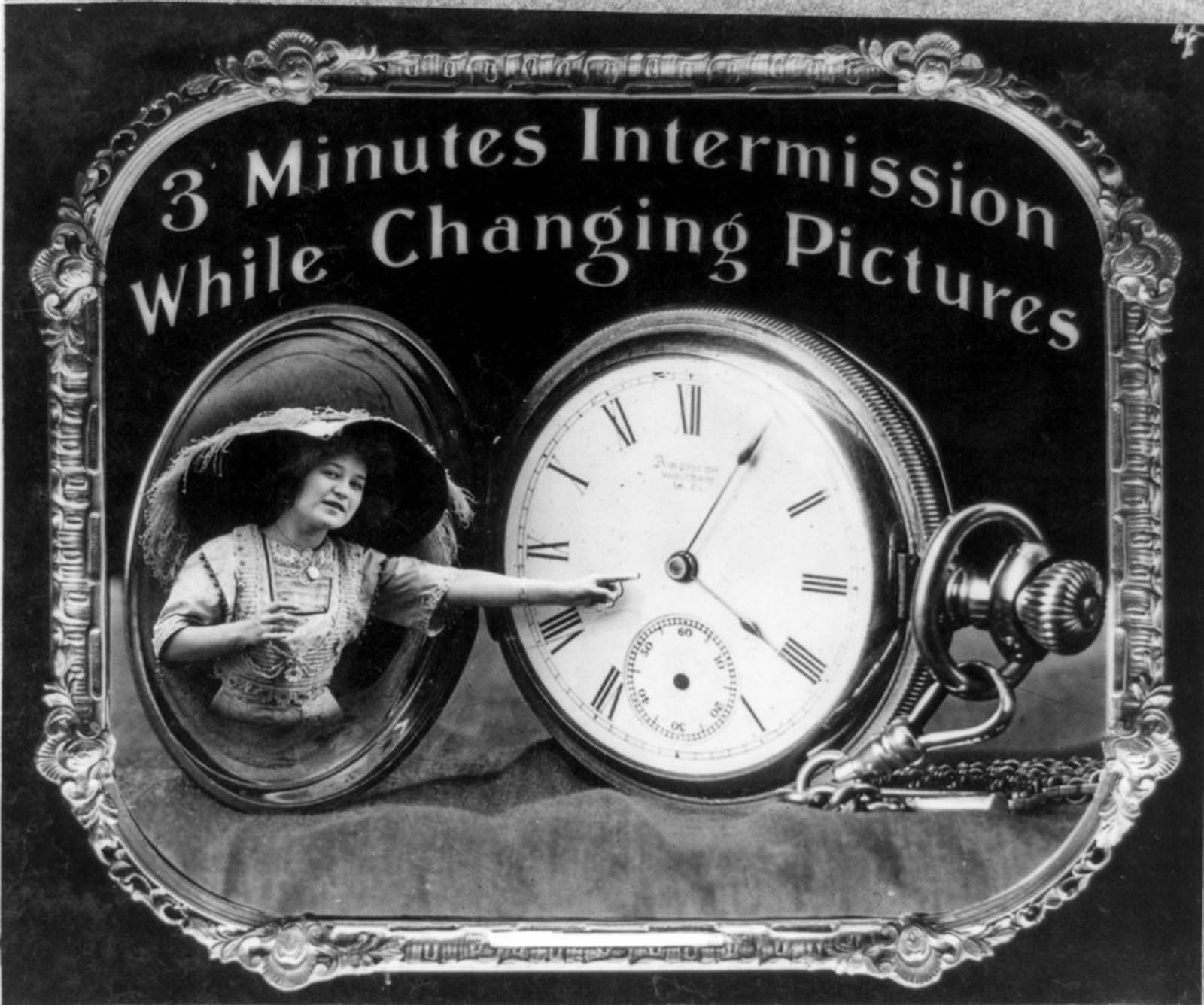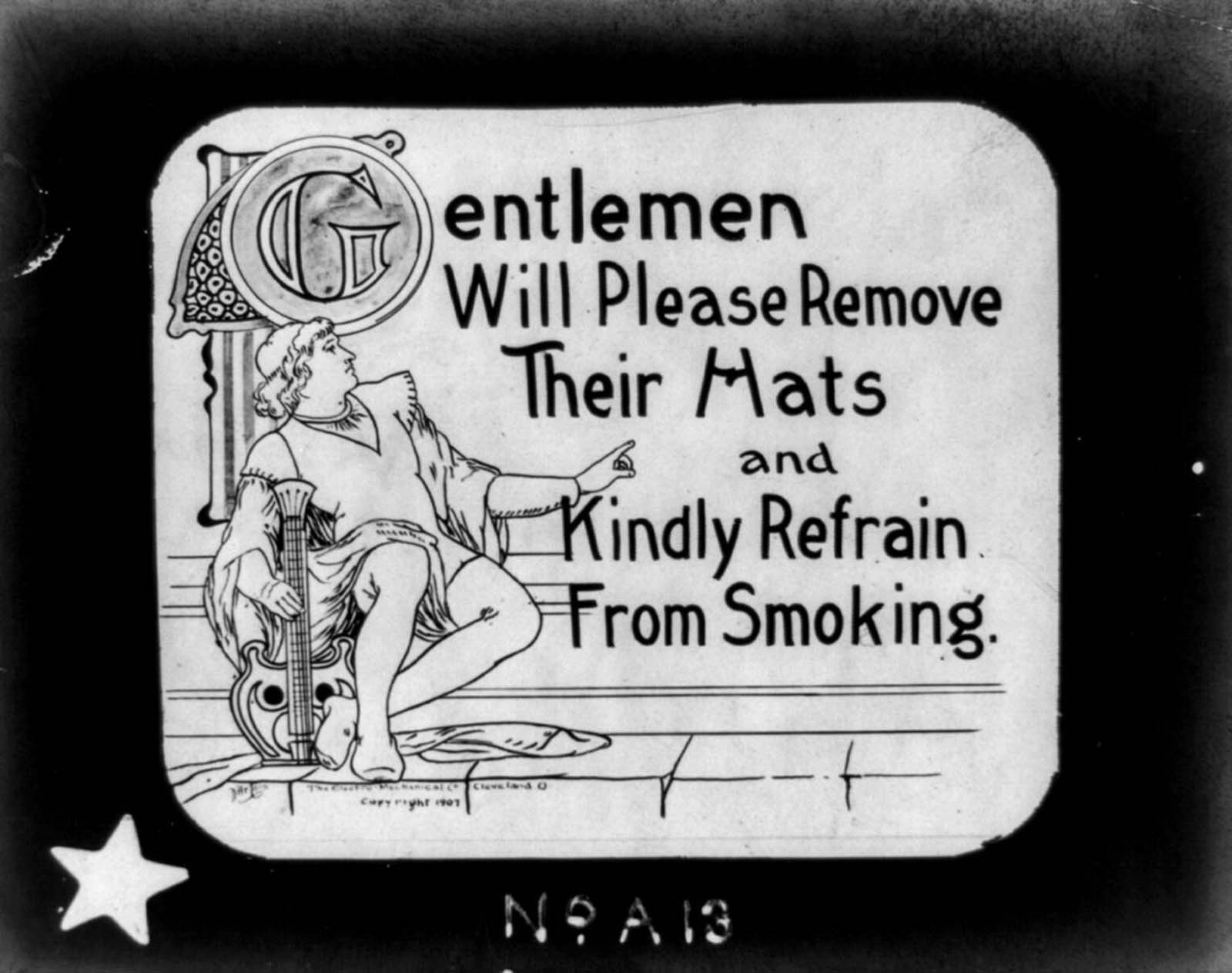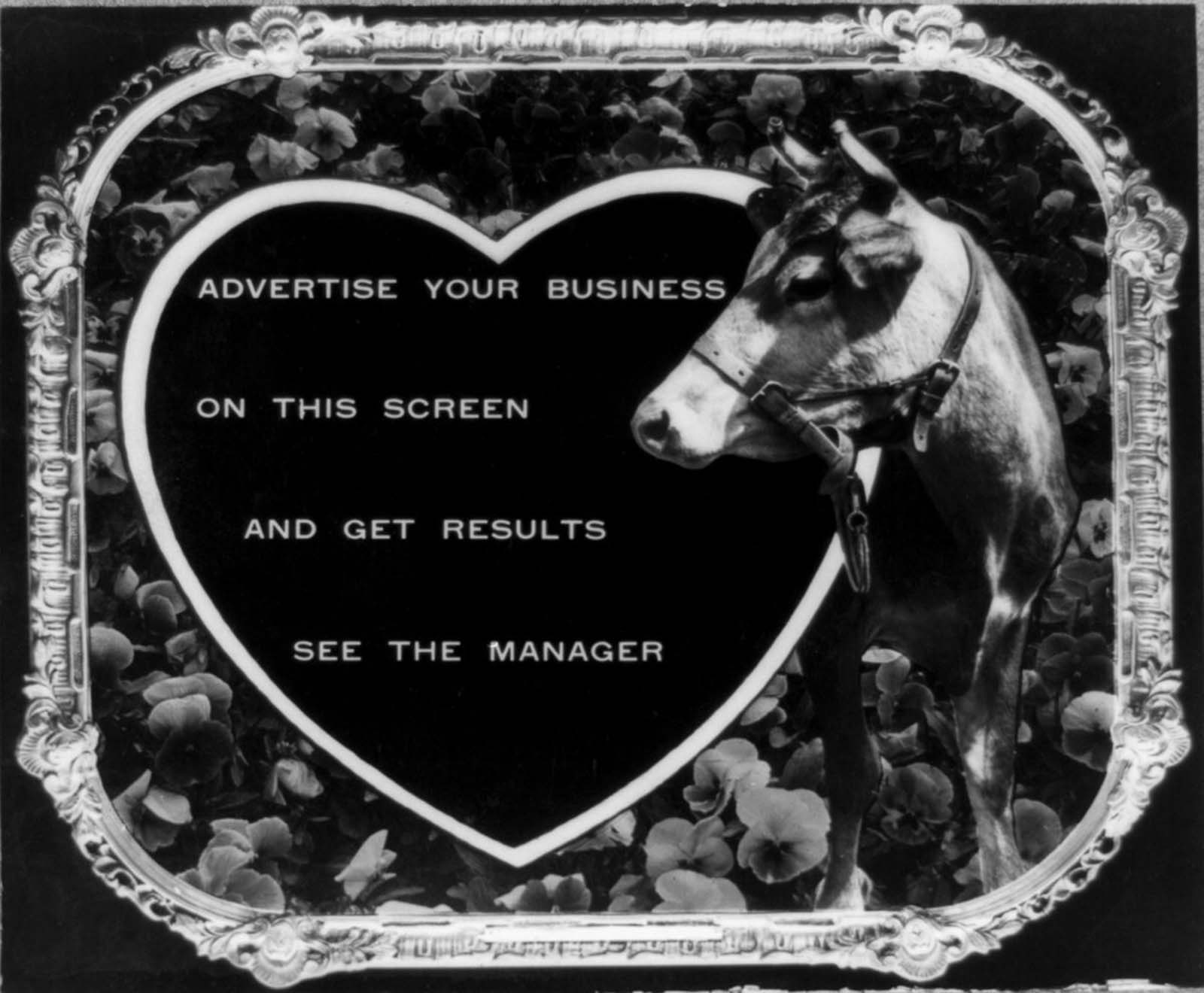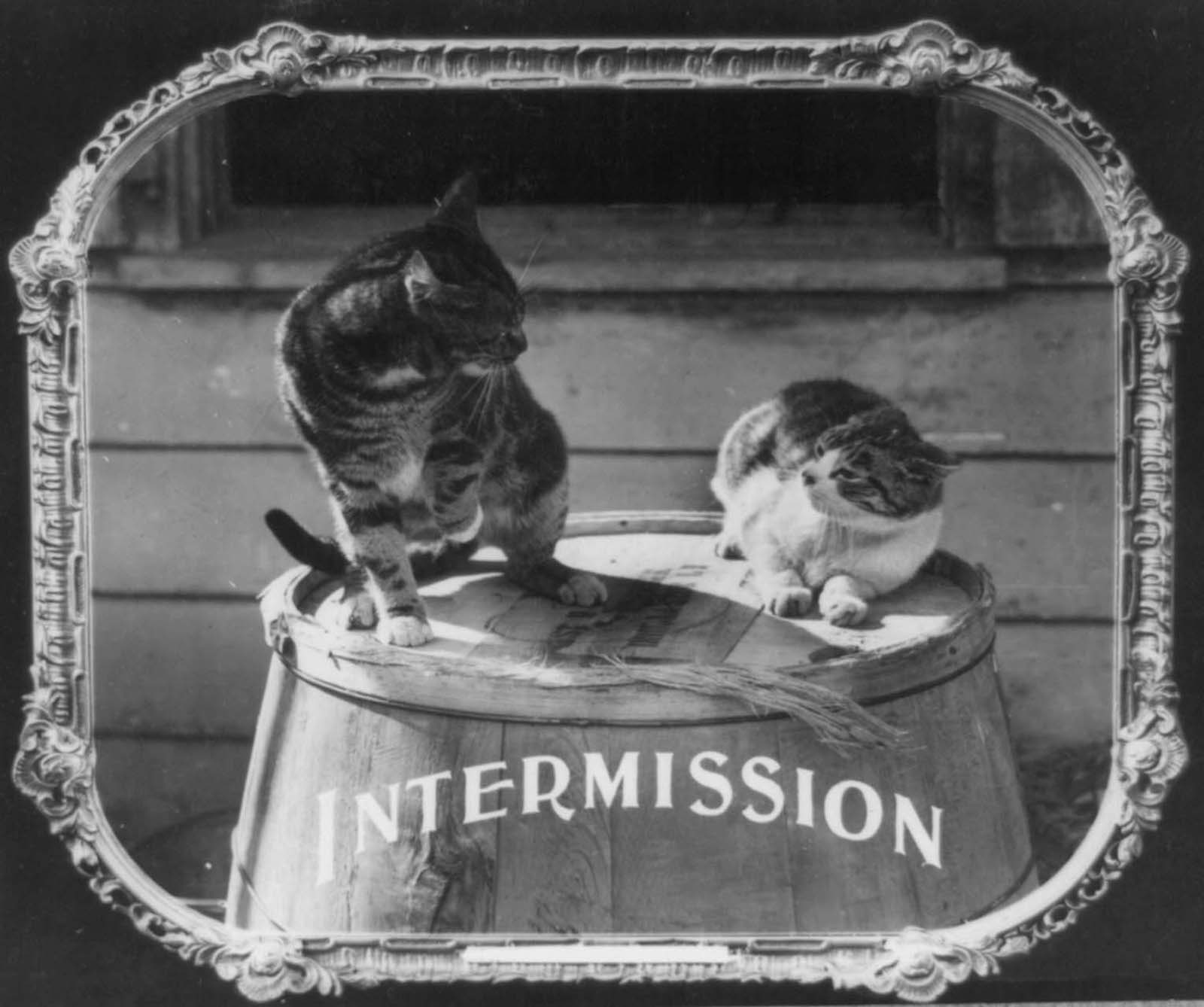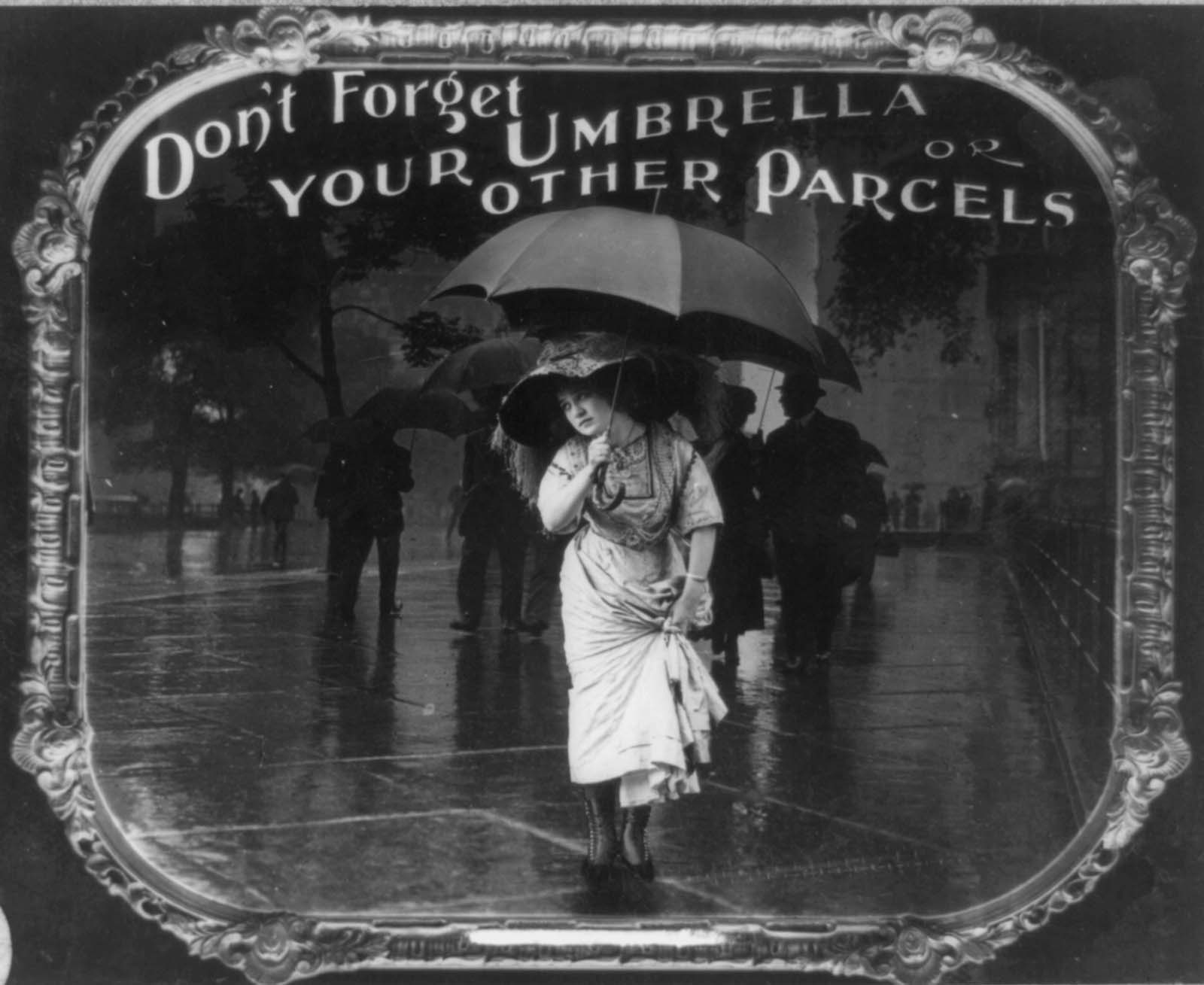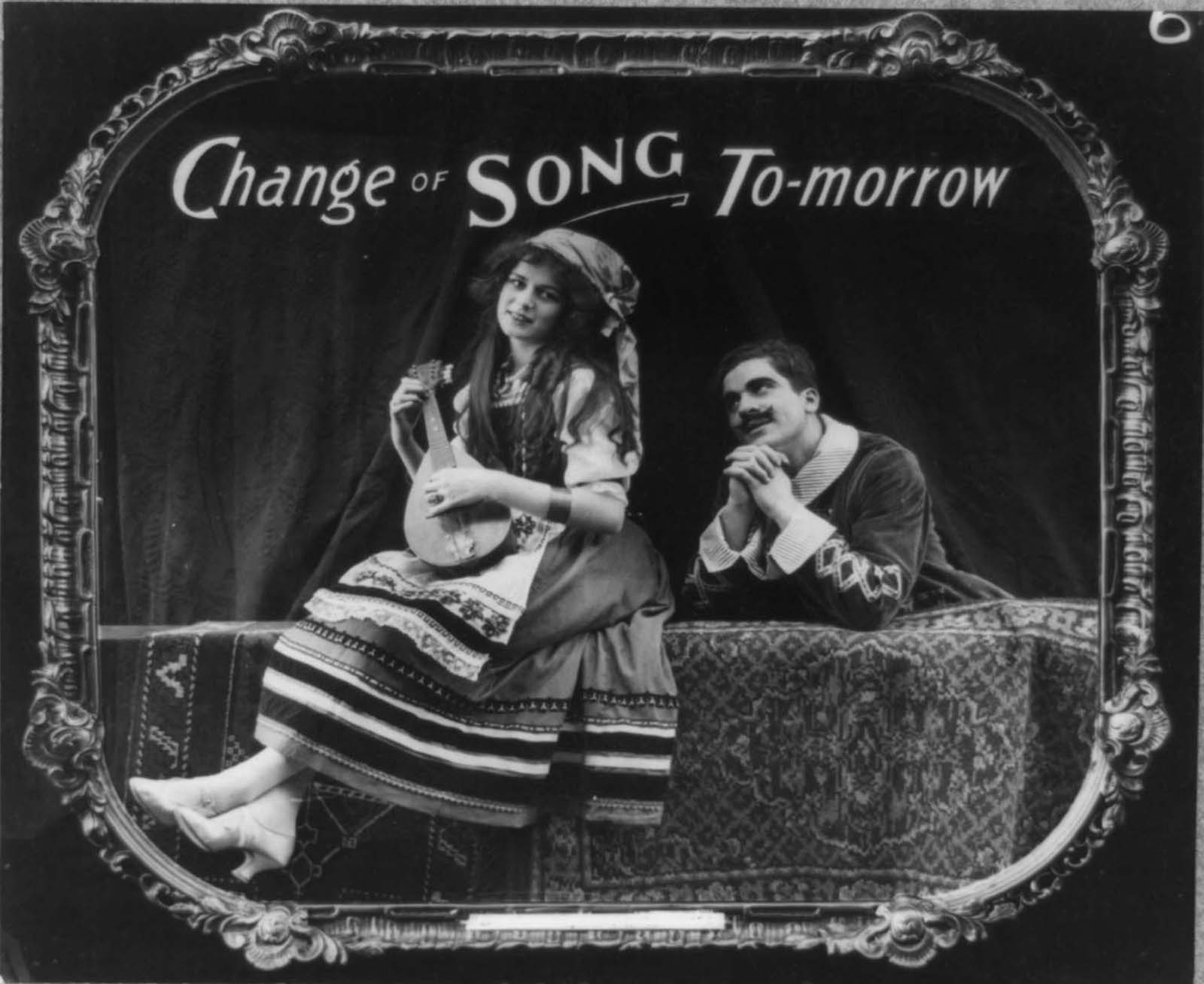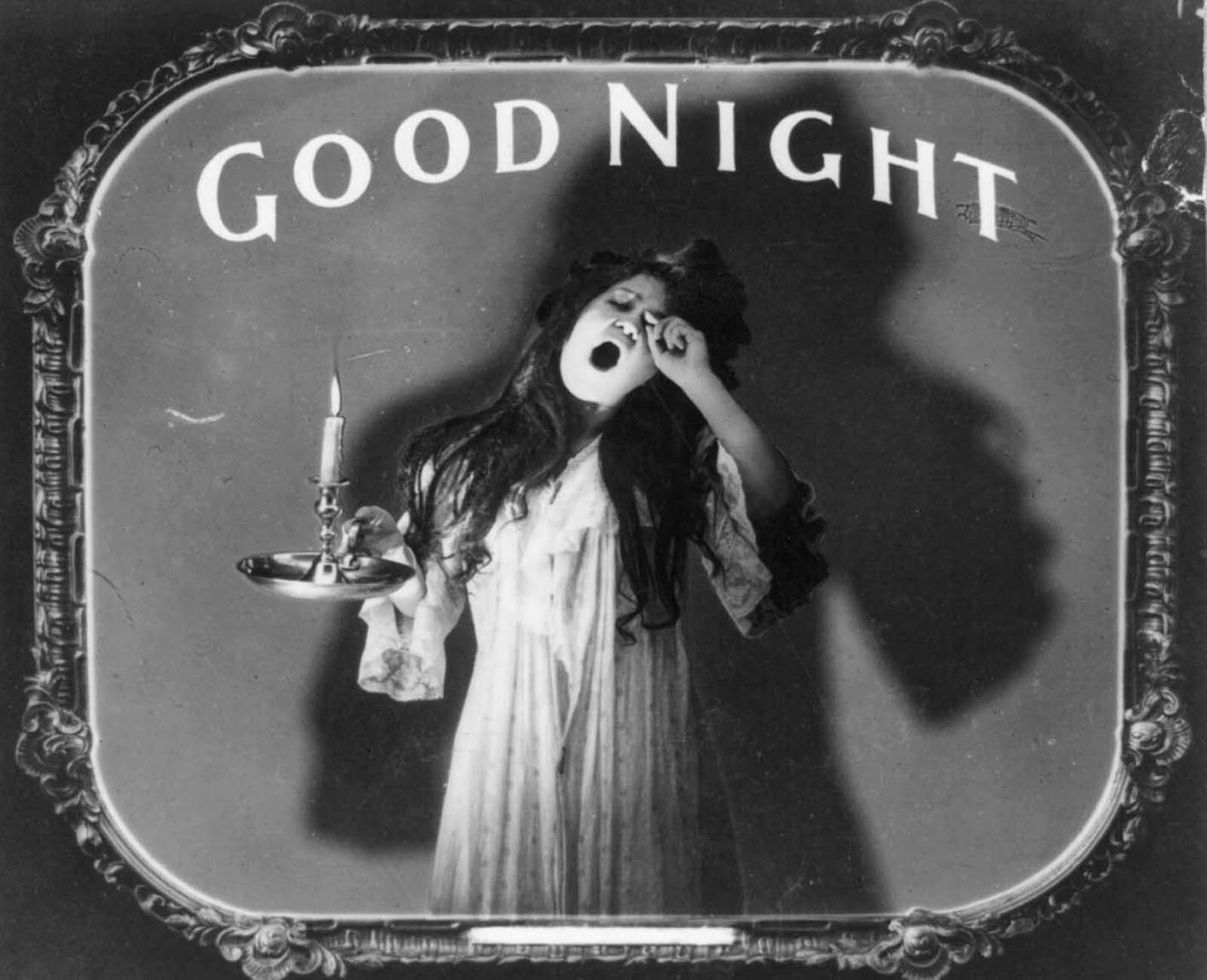During the silent film era, theatres imposed specific rules for movie watchers, displaying them on little cards. They gave several instructions, including “Ladies, kindly remove your hats,” “Loud talking or whistling not allowed,” “Please applaud with hands only,” etc. Early movie theatres only had one projector, so glass slides (or lantern slides, as initially called) were used as pauses while reels were altered. These historical photos show that these glass slides often included light-hearted instructions for proper behavior while watching films.
The movie etiquette posters of the era dealt with women’s wardrobes that we often overlook in the modern world. A big problem for movie-goers seemed to be the appearance of stylish and huge hats. Other posters emphasized applause over whistling. In the olden days, loud whistling with your fingers in your mouth was all the rage. Another poster forbade loud talking and whistling. In today’s movie theatres, talking is frowned upon, but during the silent film era, some talking was acceptable.
In early theaters, especially nickelodeons, women and men mixed much more freely than had been the case in Victorian times. As early movie theaters were not entirely respectable, some theaters put up slides between reel changes encouraging women to attend films (e.g., “Women and children are cordially invited to this theatre, which shows no offensive material”). When more women began coming to the theaters, they had to deal with scoundrels who tried to sneak up on them by using the cover of darkness, which led to the creation of “annoyance,” or in modern parlance, sexual harassment.
These slides illustrate how that concern manifested itself in fear of women’s safety or their delicate sensibilities; the fact that audiences were a mix of classes and races exacerbated these concerns. But female cinema-goers were just as likely to be perceived as a problem due to their wearing big hats and chatting. In 1910, tens of millions of Americans visited nickelodeons and movie theaters every week, attracted by the five-cent admission price. The continuously screened movies lasted as little as 10 minutes. Still, patrons could arrive at any point in a film and stay as long as they liked, watching comedies, melodramas, dance numbers, and travel documentaries.


